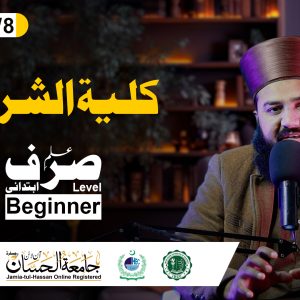where to stop and continue in quran
Understanding where to stop and continue while reciting the Quran is crucial for maintaining the intended meaning of the verses. This practice, known as Waqf, involves specific rules that guide readers on how to pause or proceed during recitation. This article will explore these rules, helping you enhance your Quranic recitation skills.
Introduction to Waqf and Ibtida
What is Waqf?
Waqf, in the context of Quranic recitation, refers to the practice of stopping at certain points in the text. This is not simply a pause for breath but a deliberate act to ensure the correct conveyance of the Quran’s meanings. Understanding Waqf is essential because it helps maintain the integrity of the text, ensuring that the message is delivered as intended. The rules of Waqf are intricate, involving various types of stops that cater to the nuances of the Arabic language and the depth of the Quranic message. Proper application of these stops requires both knowledge and practice, as each pause can alter the listener’s understanding and the emotional impact of the recitation.
📚 Explore Our Latest Islamic Courses 📚
What is Ibtida?
Ibtida, on the other hand, is the act of starting the recitation after a pause. Knowing where to resume reading is as important as knowing where to stop, as it ensures the continuity and coherence of the message. Ibtida allows the reciter to pick up the thread of the message without losing the connection to the preceding text. This skill involves understanding the context and flow of the verses to maintain the narrative or thematic consistency. Mastery of Ibtida, combined with Waqf, creates a seamless recitation experience, allowing the listener to fully engage with the Quranic teachings.
The Relationship Between Waqf and Ibtida
The relationship between Waqf and Ibtida is symbiotic, as each complements the other to create a harmonious recitation. Proper Waqf ensures that the message is paused at appropriate moments, while effective Ibtida allows the reciter to resume with clarity and purpose. Together, they form the backbone of Quranic recitation, guiding the reciter through the complex structure of the text. Understanding this relationship enhances the reciter’s ability to convey the Quran’s teachings accurately and respectfully, enriching both the reciter’s and the listener’s experience.
📚 Explore Our Latest Islamic Courses 📚
Importance of Understanding Waqf and Ibtida
Correct application of Waqf and Ibtida is essential in preserving the intended meanings of the Quranic text. Misplacing stops can lead to misunderstandings or distortions of the message.
The Impact on Meaning
For instance, stopping at an inappropriate point can change the subject of a verse or even alter the intended message entirely. Thus, mastering these rules is critical for anyone looking to deepen their understanding of the Quran. The impact of incorrect Waqf and Ibtida can be profound, as the Quran’s language is rich in meaning and context-dependent. Even a slight misinterpretation caused by poor stopping or starting points can lead to significant deviations from the intended teachings. Therefore, learning these rules is not just a technical skill but a means to preserve the sanctity and authenticity of the Quranic message.
📚 Explore Our Latest Islamic Courses 📚
Spiritual and Educational Benefits
Understanding Waqf and Ibtida is not only beneficial for accurate recitation but also enhances spiritual and educational experiences. By mastering these skills, reciters can engage more deeply with the text, fostering a closer connection to its spiritual teachings. Educationally, it allows learners to appreciate the linguistic beauty and complexity of the Quran, encouraging a more profound appreciation and understanding of its content. This dual benefit enriches the reciter’s journey, making the study and recitation of the Quran a more fulfilling and enlightening experience.
Enhancing Communication with the Divine
The correct application of Waqf and Ibtida also plays a crucial role in enhancing communication with the Divine. By ensuring that the recitation is accurate and respectful, the reciter honors the sacredness of the Quranic text. This respect and precision in recitation allow for a more meaningful connection with the divine message, enabling the reciter to convey and receive spiritual insights more effectively. This aspect of recitation transforms the act from a mere reading into a profound spiritual dialogue with the Creator.
📚 Explore Our Latest Islamic Courses 📚
Basic Quran Recitation Rules
Learning the basics of Quran recitation is the first step towards mastering the rules of Waqf and Ibtida. This includes understanding the different symbols and signs used in the Quran to guide recitation.
Common Signs and Symbols
The Quran contains various symbols to indicate where to stop, pause, or continue. Some of the most common ones include:
📚 Explore Our Latest Islamic Courses 📚
- Mim (م): Indicates a mandatory stop. This symbol ensures that the reciter takes a pause at crucial points, often marking the end of an idea or theme within the verse. Observing Mim helps preserve the logical flow and coherence of the Quranic message.
- Qili (ق): Suggests a preferred stop. While not obligatory, stopping at Qili allows the reciter to reflect and absorb the message, often enhancing comprehension and internalization of the teachings.
- Sili (صلي): Suggests continuation. This symbol encourages the reciter to maintain the flow, linking related concepts and ensuring the narrative remains uninterrupted. It emphasizes the importance of context in understanding the verses.
- La (لا): Indicates no stop should be made. This symbol warns against pausing at points that could disrupt the meaning or lead to misinterpretation. It guides the reciter to maintain the integrity of the message by ensuring that the verse is read as a complete unit.
Practice and Application
Practicing these signs during recitation will help you become more familiar with the flow of the text and improve your ability to maintain the integrity of the message. Regular practice not only enhances technical proficiency but also deepens comprehension and connection with the Quranic text. By applying these rules consistently, reciters develop a more intuitive understanding of when to pause or continue, enhancing the overall recitation experience. Additionally, practice allows reciters to internalize the Quran’s rhythm and cadence, making their recitation more engaging and impactful.
Building Confidence in Recitation
Consistent practice of recitation rules builds confidence, allowing reciters to approach the Quran with assurance and clarity. Confidence in applying Waqf and Ibtida rules enables reciters to focus on the spiritual and educational aspects of the Quran, rather than the technicalities of recitation. This confidence also translates into more effective and expressive recitation, inviting listeners to engage more deeply with the text. As reciters become more adept, they can explore advanced techniques and styles, further enriching their recitation journey.
📚 Explore Our Latest Islamic Courses 📚
Detailed Rules of Stopping in the Quran
Let’s delve deeper into the rules of stopping during Quranic recitation.
Mandatory Stops (Waqf Lazim)
A mandatory stop, indicated by the letter “م” (Mim), requires the reader to pause. This usually occurs at the end of a verse or a significant section of text that concludes a complete thought. Observing mandatory stops is crucial as it ensures the clear demarcation of ideas, allowing both the reciter and listener to process and reflect on the message. These stops often coincide with natural pauses in the text, highlighting key themes or conclusions, thereby enhancing understanding and retention of the Quranic teachings.
📚 Explore Our Latest Islamic Courses 📚
Preferred Stops (Waqf Jaiz)
Preferred stops, marked by “ق” (Qili), suggest that it is better to pause, although it is not obligatory. These stops often separate related concepts or ideas, allowing the reader to reflect on the preceding message before moving on. Preferred stops provide flexibility, enabling reciters to choose whether to pause based on their understanding and the flow of the recitation. This discretion allows for a more personalized engagement with the text, as reciters can pause when they feel it is most beneficial for comprehension and reflection.
Permissible Stops (Waqf Mu’anaqa)
Permissible stops are marked by three dots, with each pair indicating that the reader may pause at either of the two points but not both. This allows flexibility depending on the reader’s breath or understanding. Permissible stops offer reciters a choice, accommodating different recitation styles and personal preferences. This flexibility ensures that the recitation remains fluid and natural, adapting to the reciter’s needs while maintaining the integrity of the message. By understanding these options, reciters can tailor their recitation to their unique style and comfort, enhancing their connection with the text.
📚 Explore Our Latest Islamic Courses 📚
Impermissible Stops (Waqf Mamnu’)
Impermissible stops are marked with “لا” (La) and should be avoided as they can disrupt the meaning of the verse. These points usually occur within a phrase where the meaning is incomplete. Observing the impermissible stops is essential to prevent misinterpretation or distortion of the Quranic message. By avoiding these stops, reciters maintain the coherence and continuity of the text, ensuring that the verses are understood in their intended context. This attention to detail preserves the sanctity and accuracy of the Quranic teachings, reflecting the reciter’s respect and dedication to the text.
Practical Tips for Quran Recitation
To effectively apply the rules of Waqf and Ibtida, consider the following tips:
📚 Explore Our Latest Islamic Courses 📚
Consistent Practice
Regular recitation, combined with attention to the rules of stopping and continuing, will help you internalize these guidelines and improve your recitation skills. Consistency in practice fosters familiarity with the text, allowing reciters to apply the rules more intuitively. Over time, this regular engagement enhances both technical proficiency and spiritual connection, making recitation a more rewarding and enriching experience. By dedicating time to practice, reciters can steadily build their confidence and competence in Quranic recitation, paving the way for deeper exploration and understanding of the text.
Seek Guidance from Experts
Learning from experienced Quran reciters can provide valuable insights and feedback on your technique. Engaging in study sessions or classes can significantly enhance your understanding. Experts can offer personalized guidance, helping you refine your recitation style and overcome specific challenges. Their insights into the nuances of Waqf and Ibtida can accelerate your learning, providing you with techniques and strategies to enhance your recitation. By seeking expert guidance, you gain access to a wealth of knowledge and experience, enriching your recitation journey and deepening your connection with the Quran.
Utilize Audio Resources
Listening to recordings of proficient reciters can serve as a practical guide for understanding where to stop and continue. Pay attention to how they apply Waqf and Ibtida in their recitations. Audio resources provide a model for pronunciation, rhythm, and intonation, offering a benchmark for your practice. By emulating skilled reciters, you can develop a more polished and expressive recitation style, enhancing both your understanding and delivery of the Quranic text. These resources are invaluable for self-study, allowing you to learn at your own pace and revisit challenging sections as needed.
Engage in Group Recitations
Participating in group recitations can provide a supportive environment for practicing Waqf and Ibtida. Group settings offer opportunities for feedback and discussion, allowing you to learn from others and share insights. This collaborative approach fosters a sense of community and shared purpose, enriching the recitation experience. By engaging in group recitations, you can benefit from diverse perspectives and techniques, broadening your understanding and appreciation of the Quranic text.
Conclusion
Mastering where to stop and continue in the Quran is a vital skill for any serious student of the text. By understanding and applying the rules of Waqf and Ibtida, you ensure that the meanings of the verses are conveyed accurately and respectfully. Consistent practice, along with guidance from knowledgeable reciters, will enhance your recitation abilities and deepen your connection with the Quran. This journey not only improves your technical skills but also enriches your spiritual and educational experiences, allowing you to engage more deeply with the divine message. As you continue to explore and refine your recitation, you contribute to the preservation and appreciation of the Quran’s timeless teachings, sharing its wisdom and beauty with the world.








